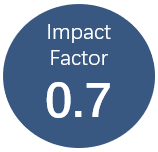Regulating local government financing vehicles and public-private partnerships in China
Vol 1, Issue 2, 2017
VIEWS - 1192 (Abstract) 605 (PDF)
Abstract
Keywords
Full Text:
PDFReferences
Cangiano M, Curristine T and Lazare M (2013). Public financial management and its emerging architecture. Washington, DC, USA: International Monetary Fund.
Funke K, Irwin T and Rial I (2013). “Budgeting and reporting for public-private partnerships”. OECD Discussion Paper No. 2013/07. Paris, France: Organisation for Economic Co-operation and Development.
General Office of State Council of People’s Republic of China (2015). (Mandarin) “[Notice of instruction on promoting public–private partnerships in public service]”. No. 2015/42. http://www.gov.cn/zhengce/content/201505/22/content_9797.htm.
Guasch JL (2004). Granting and renegotiating infrastructure concessions: Doing it right. Washington, DC, USA: World Bank. doi: 10.1596/0-8213-5792-1.
Hemming R, Cangiano M, Anderson B, et al. (2006). Public-private partnerships, government guarantees, and fiscal risks. Washington, DC, USA: International Monetary Fund.
International Monetary Fund (2007). Issues paper on public-private partnerships and fiscal risks. Washington, DC, USA: IMF.
_____ (2011). Public sector debt statistics: Guide for compilers and users. Washington, DC, USA: IMF.
_____ (2012). Fiscal transparency, accountability, and risk. Washington, DC, USA: IMF.
_____ (2014). Government finance statistics manual. Washington, DC, USA: IMF.
International Public Sector Accounting Standards Board (2011). “IPSAS 32: Service concession arrangements: Grantor and annual improvements standards”. New York, NY, USA: International Federation of Accountants. https://www.ifac.org/news-events/2011-10/ipsasb-approves-ipsas-32-service-concessionarrangements-grantor-and-annual-impr.
Lou J (2015). “Explanation on request for approval of the 2015 local government debt ceiling”. Beijing, China: National People’s Congress of the People’s Republic of China. http://www.npc.gov.cn/npc/xinwen/201509/07/content_1945886.htm.
Ministry of Finance of the People’s Republic of China (2014). (Mandarin) “[Operational guidelines for public–private partnerships (pilot)]”. No. 2014/113. http://jrs.mof.gov.cn/zhengwuxinxi/zhengcefabu/201412/t20141204_1162965.html.
National Audit Office (NAO) of the People’s Republic of China (2013a). “The audit result of 36 local government debt”. No. 2013/24 (166). http://www.audit.gov.cn/n5/n25/c63632/content.html.
_____ (2013b). “The audit result of the whole country’s government debt”. No. 2013/32 (174). http://www.audit.gov.cn/n5/n25/c63642/content.html.
National Development and Reform Commission (NDRC) of People’s Republic of China, et al. (2015). (Mandarin) “[Administration method for concession in infrastructure and public works]”. No. 2015/25. http://zfxxgk.ndrc.gov.cn/PublicItemView.aspx?ItemID={1597732e-e783-440b-ad4c-0494afa17fad}.
Organisation for Economic Co-operation and Development (2010). Dedicated public–private partnership units: A survey of institutional and governance structures. Paris, France: OECD.
_____ (2012). OECD principles for public governance of public–private partnership. Paris, France: OECD. http://www.oecd.org/governance/budgeting/PPPRecommendation.pdf.
Schwartz G, Corbacho A and Funke K (2008). Public investment and public–private partnerships: Addressing infrastructure challenges and managing fiscal risks. Washington, DC, USA: International Monetary Fund.
State Council of the People’s Republic of China (2010). (Mandarin) “[Notice on strengthening the management of local government financing vehicles]”. No. 2010/19. http://www.gov.cn/zwgk/2010-06/13/content_1627195.htm.
Wang SQ, Ke YJ and Xie J (2012). “Public private partnership implementation in China”. In: Winch GM, Onishi M and Schmidt S (eds.), Taking stock of PPP and PFI around the world. London, UK: Certified Accountants Educational Trust. p. 29–36.
DOI: https://doi.org/10.24294/jipd.v1i2.67
Refbacks
- There are currently no refbacks.
Copyright (c) 2017 Hui Jin, Isabel Rial

This work is licensed under a Creative Commons Attribution-NonCommercial 4.0 International License.

This site is licensed under a Creative Commons Attribution 4.0 International License.










